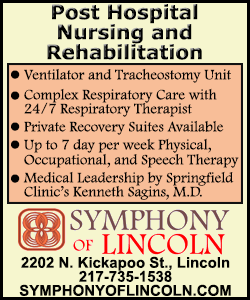|
 Rural patients are also roughly twice as likely to die before they
ever reach hospitals, researchers report in JAMA Surgery, October
12th. Rural patients are also roughly twice as likely to die before they
ever reach hospitals, researchers report in JAMA Surgery, October
12th.
“Seriously injured patients have better outcomes when treated in
major trauma centers and that time matters for certain patients,”
said lead study author Dr. Craig Newgard of Oregon Health and
Science University in Portland.
“So early activation of 9-1-1 for injured patients and advocating
for transfer to a major trauma center when serious injuries are
present may help improve outcomes and reduce disparities in care,”
Newgard added by email.
There are several potential reasons why the majority of rural trauma
patients with serious injuries didn’t reach hospitals or got care
outside of major trauma centers: potential delays alerting emergency
medical services, lack of proximity to major trauma centers, long
distances for inter-hospital transfers, high threshold for providers
in rural hospitals to transfer patients and patient choice to stay
within their community or close to family, Newgard said.

For the current study, Newgard and colleagues analyzed data on
children and adults served by 44 emergency medical service (EMS)
agencies transporting to 28 hospitals in two rural and five urban
counties.
Among the 67,047 patients evaluated by EMS during the 12-month study
period, 1,971 (less than 3 percent) were injured in rural areas and
65,076 (just over 97 percent) were injured in urban communities.
For the analysis, researchers considered patients “rural” if they
lived in a county at least 60 minutes away from the nearest level 1
or level 2 trauma center, the hospitals with the best staff and
equipment to handle the most severe injuries. They also classified
patients as “rural” if they lived in a ZIP code defined this way by
Medicare.
Of all the patients evaluated by EMS, 53,487 were transported to
hospitals. These patients were about 52 years old on average and
slightly more than half of them were women.
When researchers looked at all deaths - out of the hospital, in
emergency departments and during the remainder of hospital stays -
mortality wasn’t significantly different for rural and urban
patients.
However, a greater proportion of rural deaths happened shortly after
injury.
Among the 29 deaths in rural regions, 15 (52 percent) happened out
of the hospital, and 11 (38 percent) occurred within 24 hours or
less.
[to top of second column] |

Among urban deaths, about 25 percent occurred out of the hospital
and 40 percent were within 24 hours or less, the study also found.
This suggests faster responses to emergencies and more rapid
transfers from community hospitals to trauma centers might improve
survival odds for rural patients, the authors conclude.
Limitations of the study include the lack of data on patients who
didn’t access EMS and on patients who died in the field, the authors
note. They also had a relatively small group of rural patients in
the study, making it hard to identify statistically meaningful
differences in mortality.
With so few rural patients, the mortality rates aren’t conclusive,
said Dr. Nitish Patidar, a health management researcher at
Quinnipiac University in Hamden, Connecticut, who wasn’t involved in
the study.
“The current study and at least one previous study found that if
rural trauma patients survive to reach the emergency department or
trauma center, then they have a better outcome compared to the urban
trauma patients admitted to emergency department,” Patidar said by
email.
“There is no evidence, for the above finding, but authors
hypothesized that urban trauma patients receive good care initially,
which prolongs their non-survival injuries,” Patidar added.
Even so, the results add to growing evidence of geographical
disparities in trauma care, said Dr. Brendan Carr, an emergency
medicine researcher at Thomas Jefferson University in Philadelphia
who wasn’t involved in the study.

“This paper quantifies . . . the reality that longer transport times
in the rural setting results in higher pre-hospital death rates,”
Carr added by email.
SOURCE: http://bit.ly/2eimyZ8
JAMA Surg 2016.
[© 2016 Thomson Reuters. All rights
reserved.] Copyright 2016 Reuters. All rights reserved. This material may not be published,
broadcast, rewritten or redistributed. |